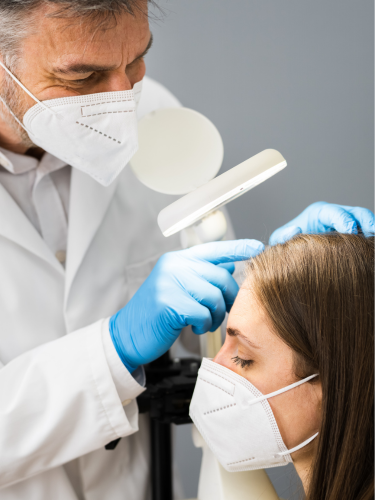Dermatology Expert Ted Rosen, MD, Illuminates ‘Lumps and Bumps’ at SDPA Conference
Beloved lecturer Ted Rosen, MD, kicked off a discussion on case-based lumps and bumps by defining a “lump” as a larger lesion that can be seen or felt and a “bump” as a smaller lesion that is frequently itchy. He cautioned attendees of the SDPA 21st Annual Fall Dermatology Conference in Nashville that one cannot use size to determine if a lesion is benign or malignant. Indeed, his first case presentation illustrated a patient with a “bumpy” rash on the arm consistent with pustules. Typically, when evaluating pustules, the differential is MRSA or candida. In the case Dr. Rosen presented, the patient had been bitten by “fire ants” which results in pustules due to venom insertion. Fire ants to be found mostly in the southeast, however, these ants are now found in numerous locations in the US. Dr. Rosen reviewed a case of a patient who is a sex worker presenting with a bumpy, asymptomatic rash on the torso consistent with secondary syphilis.
Coverage: SDPA 21st Annual Fall Dermatology Conference, Oct. 25-29, 2023 in Nashville, Tennessee
He followed up by highlighting the case of a young male who returned from a trip to Jamaica with a small itchy lump with a track. This track was a clue of cutaneous larva migrans which is found in warm climates where dogs/cats defecate. The hookworm living in the feces penetrates exposed skin. Treatment is achieved with oral albendazole 200 mg BID x 5-7 days. Photodermatoses were reviewed including polymorphic light eruption (PMLE). He notes that PMLE will resolve on its own in 75% of patients, nevertheless patients typically need to be treated for discomfort before the resolution. Options for PMLE include sun protection, sun avoidance, supplementation with polypodium leucotomas extract and oral hydroxychloroquine.
An interesting case of a young patient with HIV was presented with numerous umbilicated papules on the face. This case highlighted the importance of knowing that, in HIV patients, disseminated cryptococcus and molluscum contagiosum are very similar in presentation and needs a biopsy. Next, the cases of “lumpy bumpy” pruritic rashes of the face of two different grandmas were presented. Both women were diagnosed with eosinophilic folliculitis, which is a presentation of HIV. Further, Dr. Rosen presented two patients with “bumps” on the cheeks who had been referred for Mohs surgery, both of whom had no history of AKs or NMSC. One patient had blastomycosis and the other presented with leishmaniasis. These cases highlight that it may not be what you first think and “always do a biopsy” because you need to know what you’re treating.
Byline: Sarah B.W. Patton, MSHS, PA-C
